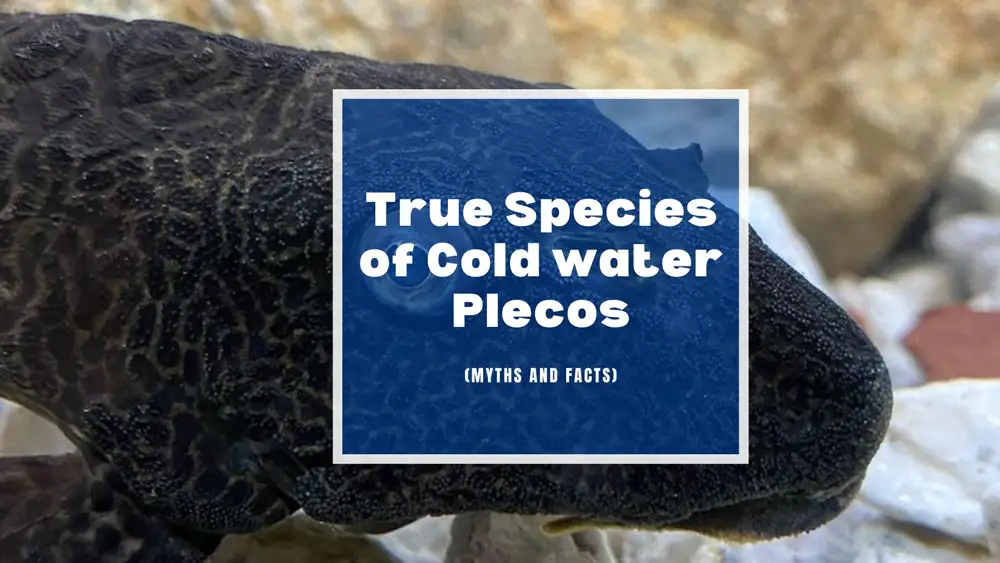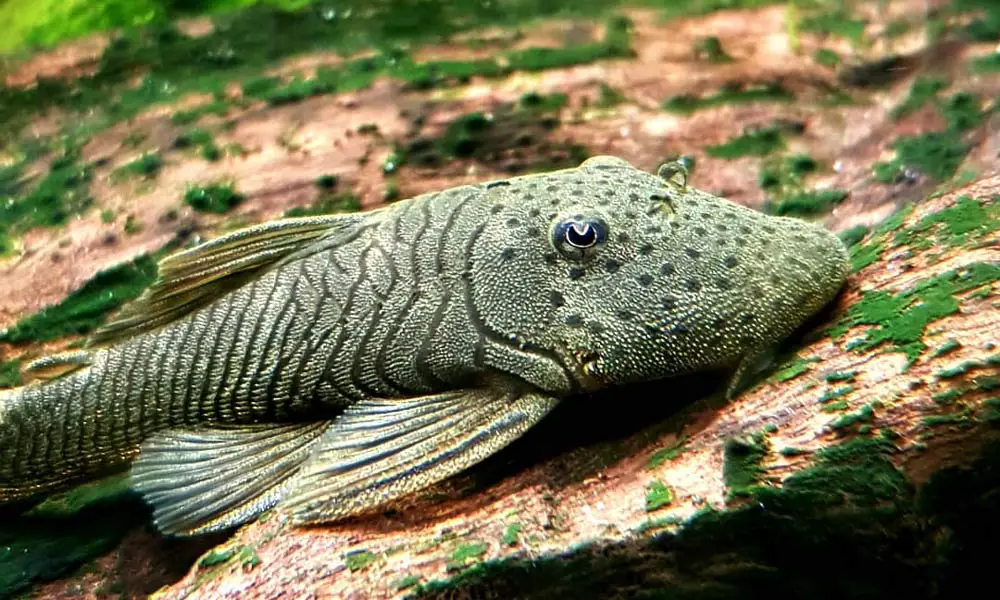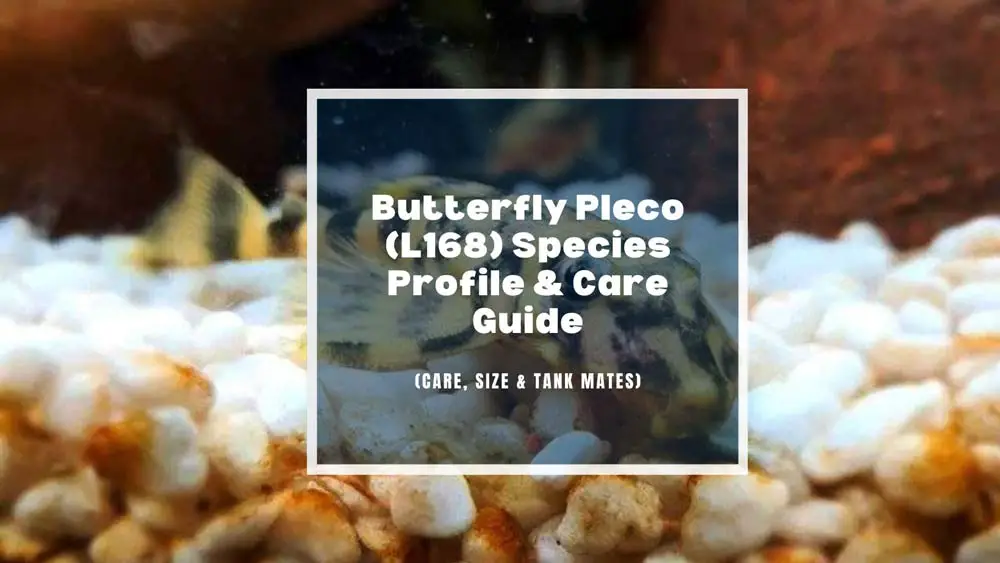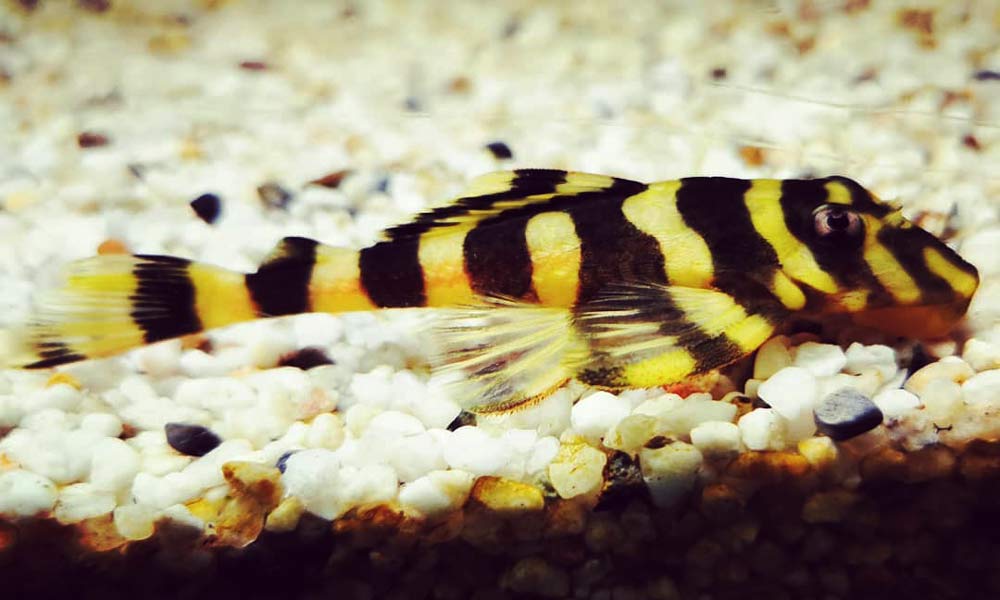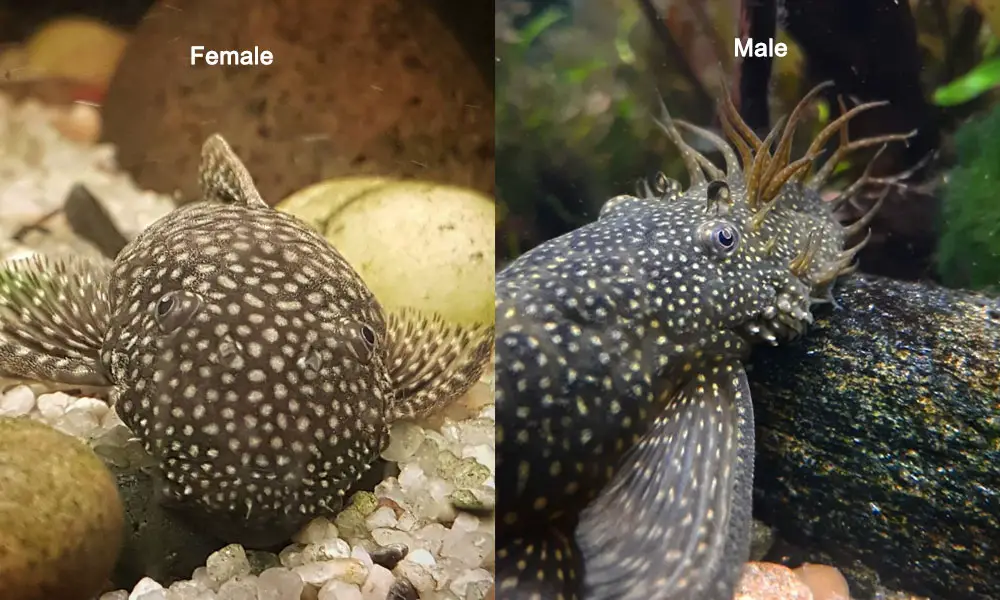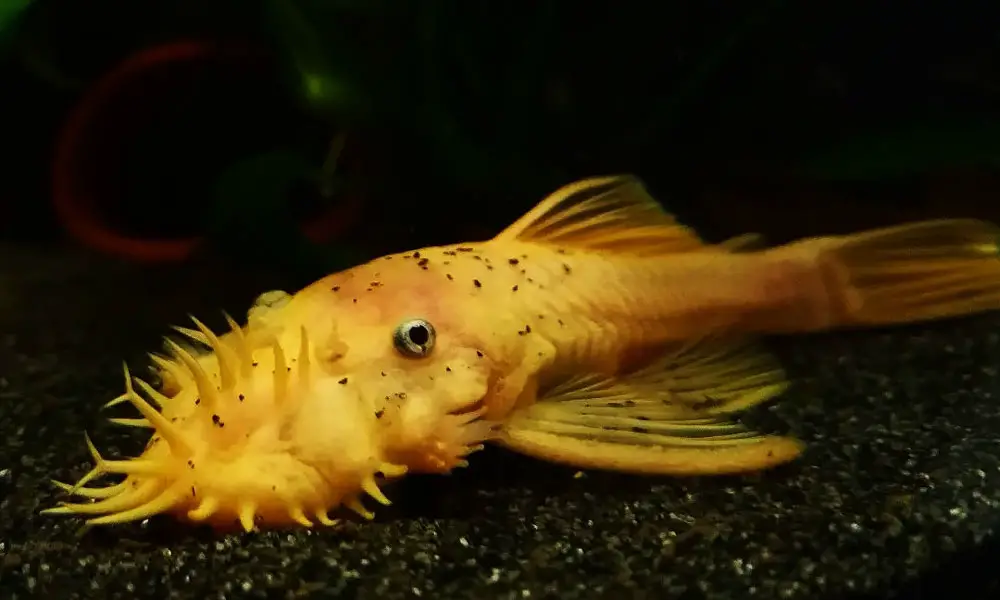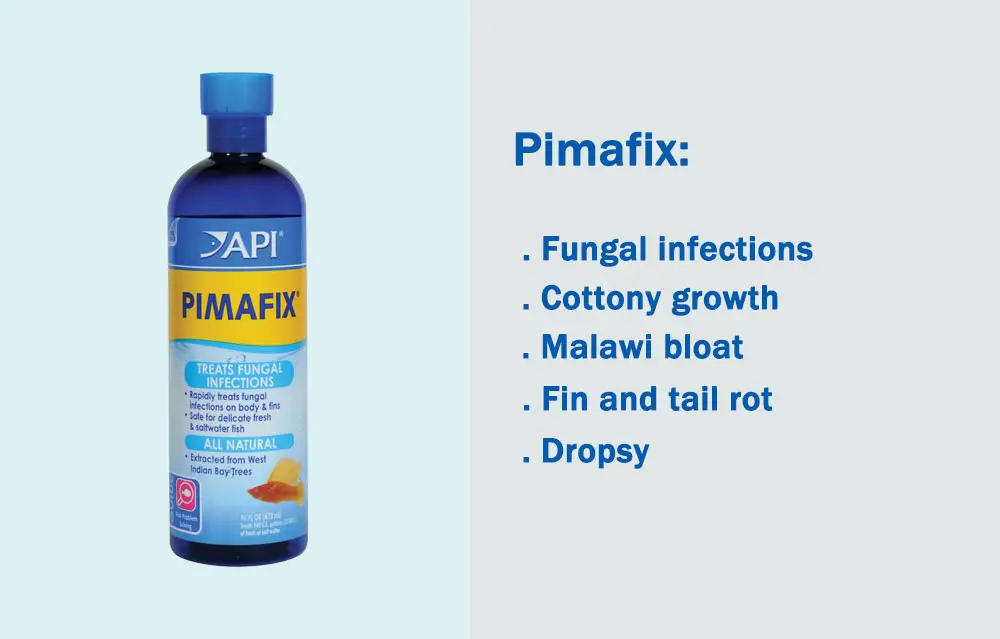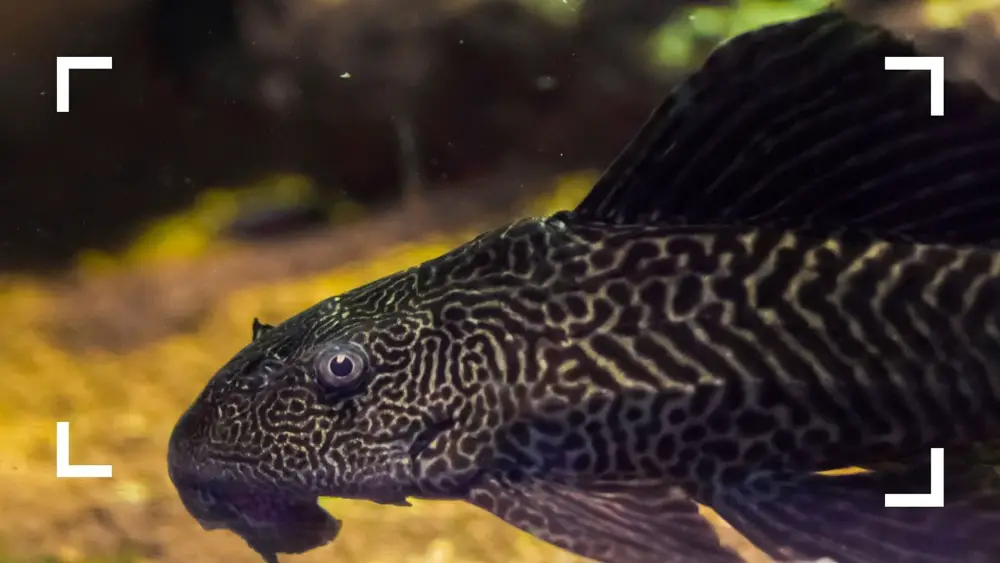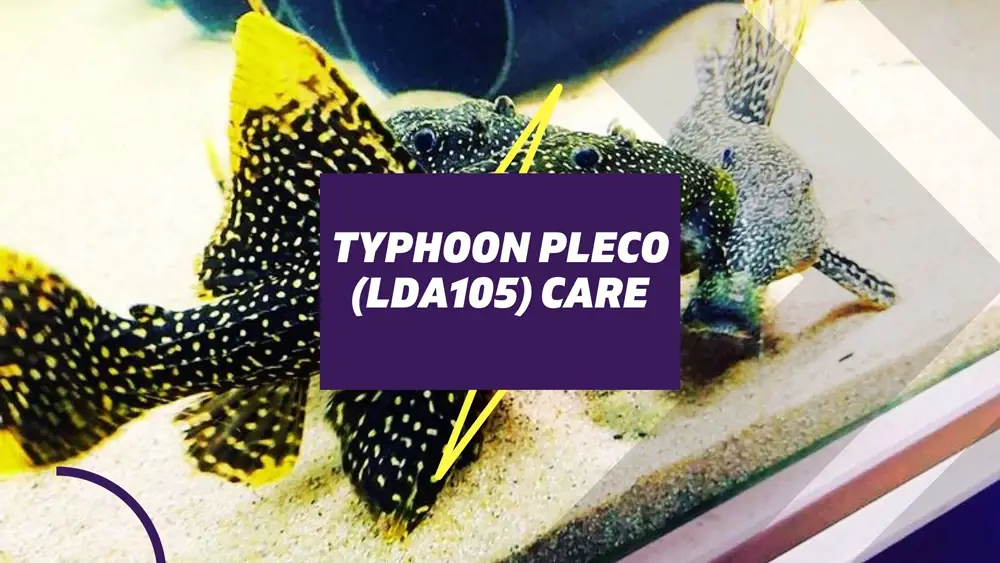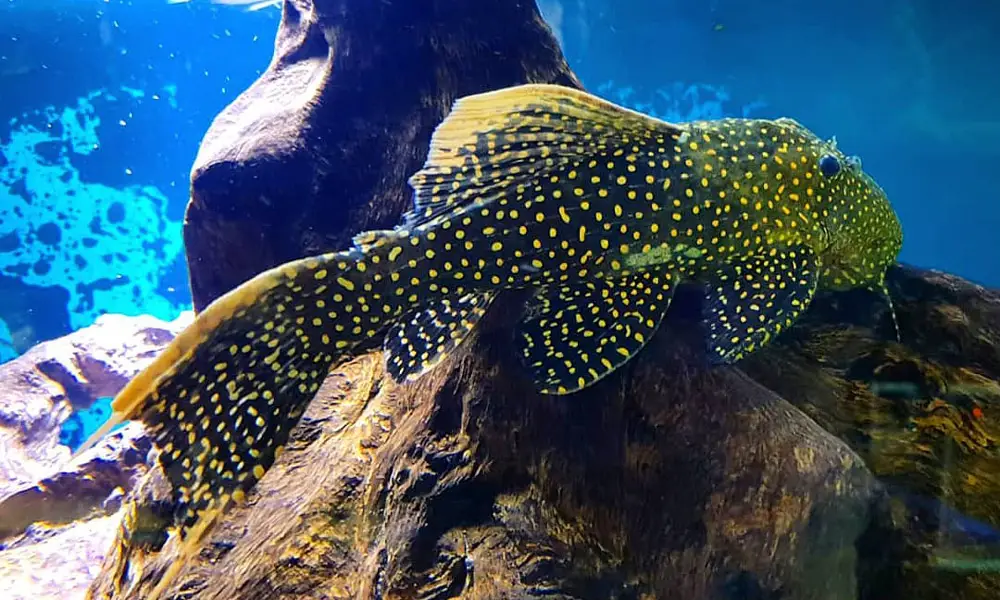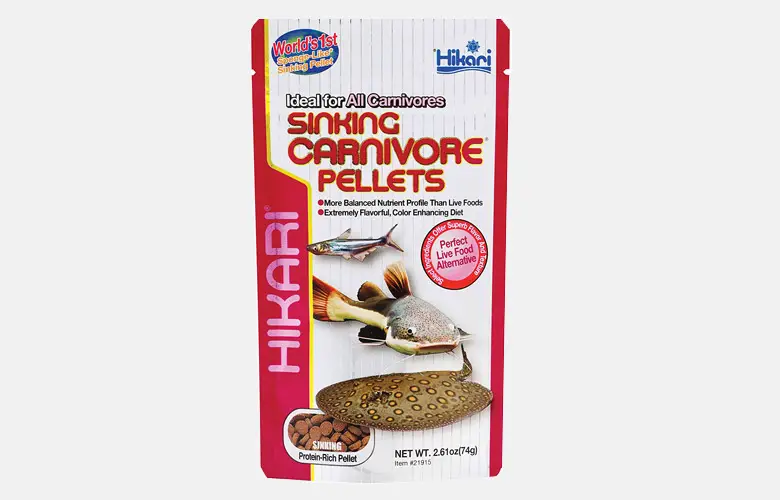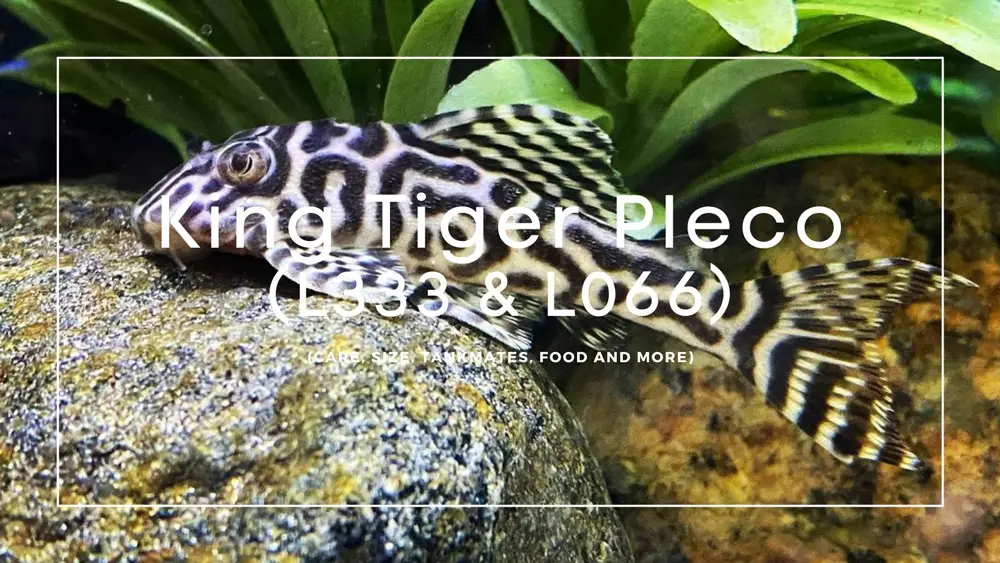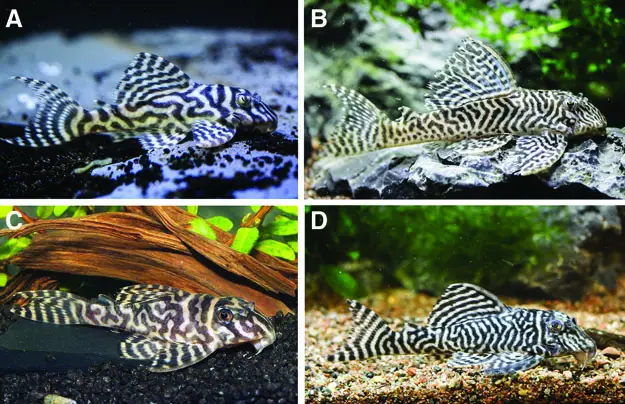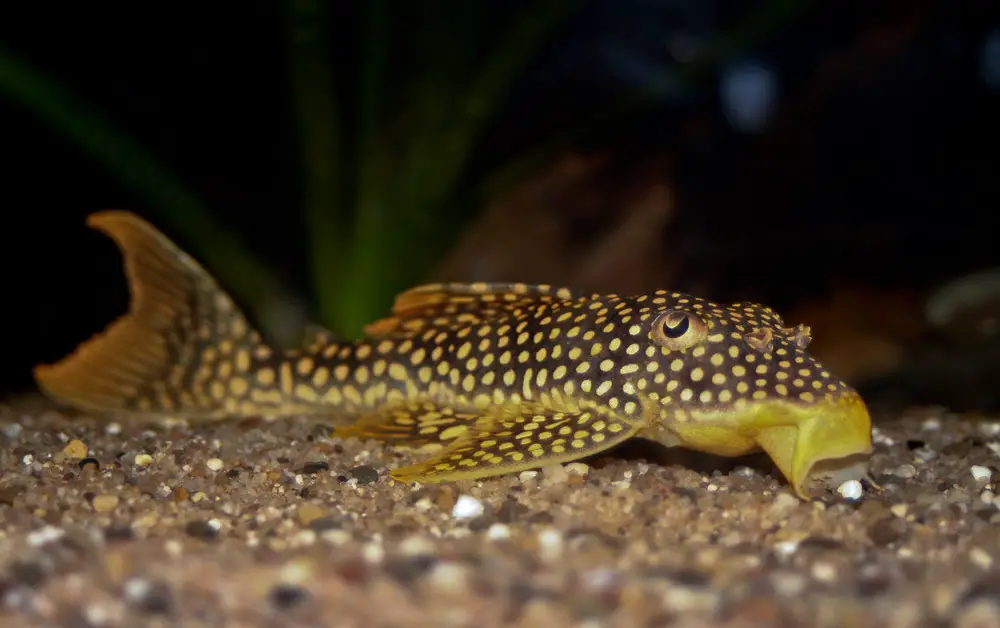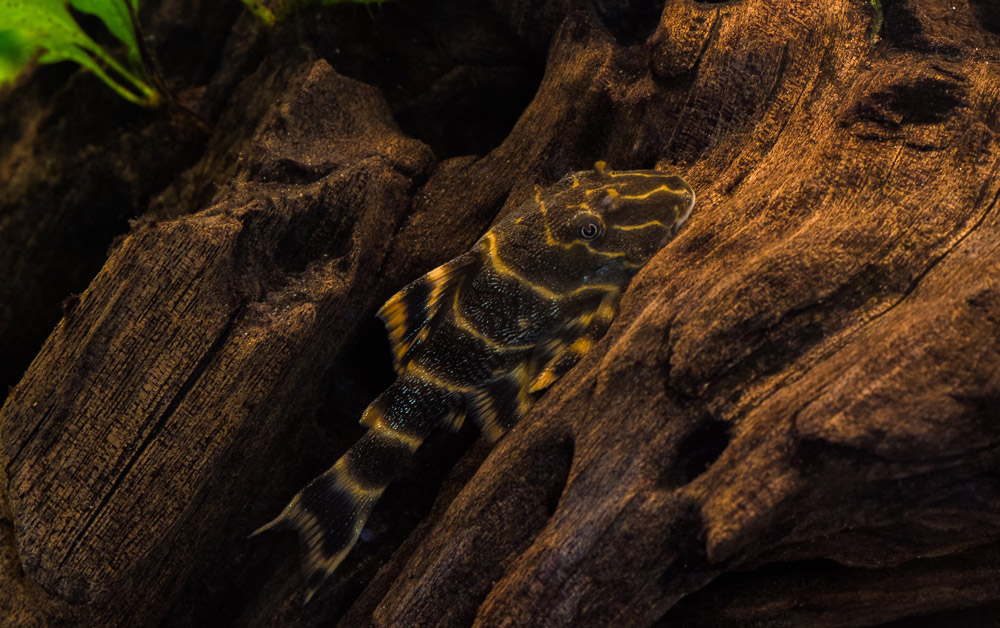Looking for an eye-catching and unusual bottom-dweller to spice up your aquarium, the L239 or blue panaque pleco might be a good option. These fish are definitely not your typical pleco – they’re much more colorful and rather smaller than other popular pleco species.
Since these slow-growing suckermouth catfish are not very common in the aquarium trade, there aren’t any comprehensive resources available.
But don’t worry, that’s where we come in! In this article, we’ll give you all the information you need to know about blue panaque plecos, including their natural habitat, diet, and tank mates.
Read on!
Species Profile
The Blue Panaque Pleco, or the L239, is a freshwater fish found in the soft, acidic waters of Río Orinoco in Venezuela and Colombia, where it inhabit the surfaces and undersides of granitic bedrock and boulders.
This species was first described in 2009 and named in honor of Chris Beggin, who supported the research work of the species. The trade name Blue Panaque often misleads people into believing that it’s a member of the Panaque genus. It virtually has little or nothing in common with these larger, wood-eating catfishes.
Although L239 has been classified as Baryancistrus beggini, the truth is that this is a very new species and exhibits several distinct characteristics from other Baryancistrus species, like the well-known Golden nugget pleco (Baryancistrus xanthellus) and their close relatives. There’s a strong possibility that it will be moved to a different genus or yet unnamed genus. Only time will tell for sure.
| Scientific Name: | – |
| Common Name: | Blue Panaque Pleco, L239 |
| Care Level: | Advanced |
| Origin: | Venezuela and Colombia |
| Lifespan: | 5 years |
| Max Size: | 3.5 inches (9 cm) |
| Temperature: | 77°F – 86°F (25°C – 30°C) |
| PH: | 5.5-7.0 |
| Water hardness: | 0 to 12 dKH |
| Diet: | Omnivorous |
| Minimum Tank Size: | 20 gallons |
| Temperament: | Relatively Peaceful |
Appearance
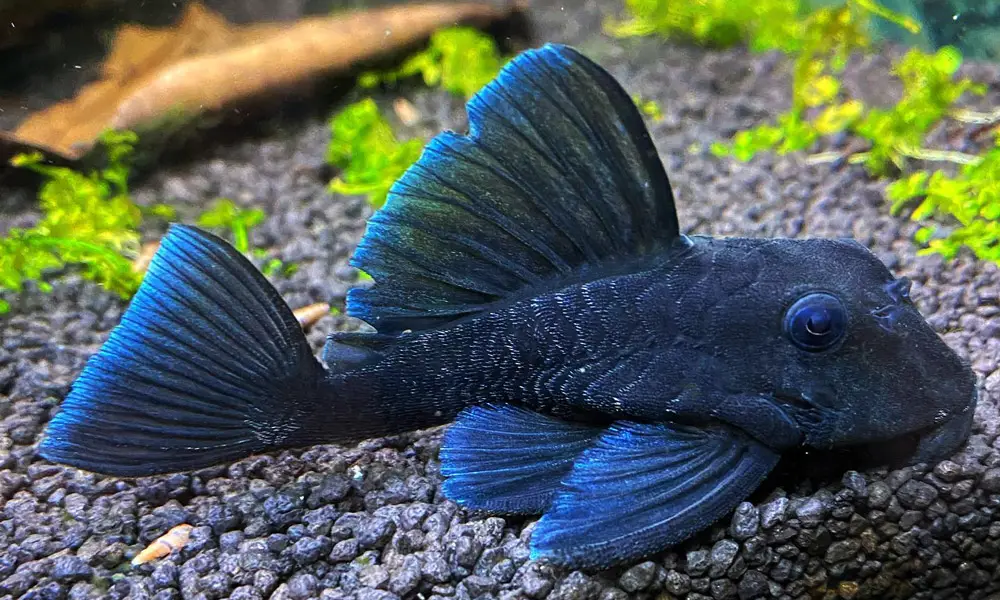
It’s not hard to see why this relatively rare pleco is highly sought after by aquarium enthusiasts. The Blue Panaque pleco is a real stunner, with its stunning navy blue coloration and stocky build.
Compared to many types of plecos that take on a drab brown or gray color with a series of lighter spots all over, the Blue Panaque pleco really stands out no matter what!
Their body is relatively stubby and is mostly dark blue with some black shadowy patches, making them very attractive.
They develop a pair of pectoral fins, a pair of abdominal fins, as well as a larger dorsal fin up top that often have a light blue coloration on edge, which shine when the lights hit them.
Males Vs. Females
Identifying plecos is never an easy task, as many species can be very similar in appearance, especially these wild-caught specimens. Blue panaque plecos are no different, let alone their small size.
One of the main ways to tell apart a sexually mature male and female Blue Panaque pleco is that the males tend to have relatively longer whiskers (odontodes) on their pectoral fins and cheeks, while females often are slightly larger in size when viewed from above. Other than that, males may exhibit a more intense blue coloration than females.
Lifespan
L239 has a lifespan of approximately 5 years when kept in captivity. Some have been known to live even longer with proper care.
The number assumes that the fish will be kept in good water condition with a nutritious diet, so it’s important to do your best to provide them with everything they need to thrive. (more on that a bit later).
Size & Growth Rate
Fully grown Blue panaque plecos will only reach a maximum length of around 3.5 inches (9 cm) – much smaller than their other plecos, making them a great option for many aquariums.
The fry grow fast and can reach around 1.2 inches (3 cm) in total length within the first 3 months, and then the growth rate slows down. After 6-9 months, they will be approximately 1.6 inches (4 cm).
Blue Panaque Pleco Care Guide
Blue Panaque plecos are not the easiest fish to keep, and they definitely require a bit more care than your average pleco. Unlike most plecos, these small, shy bottom-dwellers are not suitable for the general community aquariums due to their complex natural habitat.
They are also known as one of the difficult to acclimate species- these fish are very sensitive to new water parameters and environment changes. Many of them die during the acclimation process because of stress and malnutrition.
So, if you’re thinking about adding one of these creatures to your aquarium, be prepared to do some extra work to ensure the aquarium is mature.
They should only be kept in specialist communities that perfectly recreate their natural biotope. With that said, they’re not the best species for beginner aquarists.
Natural Habitat
As we mentioned earlier, Blue panaque plecos are found among the interstices of granitic bedrock and boulders that are exposed parts of the Guiana Shield. In these areas, water flows over or around these rocks, resulting in high speed and high dissolved oxygen concentration.
If you want to recreate these water conditions in the home aquariums, a regular tank setup will not work. A river-tank manifold design with smooth/flat rocks and gravel to resemble large water-worn rocks gives them a more natural environment.
Let’s take a look at what goes into taking care of them, so you know what to expect.
Blue Panaque Pleco Tank Size
Since these fish are on the smaller end of the spectrum, the minimum tank size for a single Blue Panaque Pleco is 20-gallon long (30″ x 12″ x 12″). If you plan on having a group of 3-4 fish in a well-decorated aquarium, you need to invest in a tank that’s at least 40 gallons (36″ x 18″ x 16″). You can keep younger juveniles in smaller tanks, but they will need more space once they mature.
It’s a good idea to keep them as the only pleco or bottom dwellers in the tank because they can be very aggressive and territorial against other catfish and bottom dwellers, especially these blue-colored fish. So if you have two males or other bottom dwellers, you’ll need at least 75 gallons (48″ x 18″ x 21″) tanks.
Water Conditions
These strikingly colored catfish do best in soft, slightly acidic to neutral water. They also require warmer water (at least 77°F), fast water flow, and plenty of oxygen.
However, do remember warm water holds less dissolved oxygen than cold water. To ensure a higher oxygen level and strong currents in your tank, either a river-tank manifold or powerheads is your best bet. Personally, I prefer the former as it creates a more natural water flow.
Here are some basic parameters to stick to:
- Water Temperature: 77°F – 86°F (25°C – 30°C)
- pH Level: 5.5 – 7.0
- Water Hardness: 0 – 12 dGH
A strong filter is also a must as these fish are quite messy, and you’ll need to do weekly water changes of 15% – 30%, depending on your bioload.
Decor
In addition to a substrate of variably-sized pieces of smooth rocks, bogwood or driftwood branches should be used to create plenty of shady caves and grazing areas for Blue Panaque plecos.
Plants that can be attached to driftwoods or other decor are a good idea, but Blue Panaque plecos will also rasp at softer aquarium plants, so choose carefully. Anubias spp. and Bolbitis spp. are good options that will provide good places to promote the growth of aufwuchs, which these plecos love to eat.
Though bright lighting will also encourage more aufwuchs, Blue Panaque plecos prefer subdued lighting and will do best under low-tech conditions.
Food & Diet
In the wild, the Blue Panaque Pleco feeds mainly on microalgae, small crustaceans, and invertebrates that are abundant on the surface and underside of rocks.
In the aquarium, it should be given a varied diet containing a large proportion of vegetable matter. You can allow aufwuchs to colonize driftwood and rocks in the aquarium or supplement with blanched vegetables such as zucchini, carrot, cucumber, and squash.
You should also offer them a good quality pleco diet, algae wafers, and occasional live or frozen meaty foods like bloodworms, brine shrimp, and mosquito larvae.
List most plecos, L239 has a very long and complicated digestive tract that is used for breaking down foods with high vegetable content. So do not give them an excessive amount of meat-based diets as this can lead to health problems!
Compatibility & Tank Mates
These are hardy, relatively peaceful pleco that can live with tankmates that ideally occupy the middle and top levels of the aquarium.
However, Blue Panaque plecos can be quite territorial and aggressive towards their own kind as well as other plecos and bottom dwellers, so it’s best to keep only one per tank or in a group of 3-4 where they have plenty of space to establish their own territories.
Breeding
Most of these in the market have been with wild-caught fish. Breeding Blue Panaque Plecos in captivity is difficult. Only a few breeding reports exist.
As far as we know, Blue Panaque plecos are cave spawners, and frequent partial water changes with increased water flow seem to be the key to initiating spawning in aquarium conditions.
If you intend to breed this fish, this guide might be useful: Breeding L239 Baryancistrus beggini.
Conclusion
The Blue Panaque (L239) is known for its beautiful blue coloration and small size in the trade. However, these striking creatures are extremely sensitive to acclimating to new water conditions and are not compatible with other plecos.
These fish are generally available through online retailers and specialty fish stores and often come with a high price tag. When looking for L239 for sale, be sure to ask the retailer how long they have been in the store, if they have already been treated for parasites, and where the fish come from. Carefully take a good look at the belly of the fish. If you see the sunken, it is a good sign that the fish is not in good health. It most likely will not survive the journey to your home due to internal bacteria or parasitic infection.
If you have any lingering questions about Blue Panaque plecos or suggestions on how we can make our guides better, please feel free to leave a comment below!
